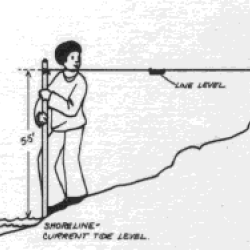Source Institutions
Source Institutions
Add to list Go to activity
Activity link broken? See if it's at the internet archive

In this outdoor, ocean-side activity, learners investigate the distribution of organisms in the upper region of the intertidal zone. Many coastal animals survive long exposures to air, high temperatures, and wave shocks as the tides rise and fall. Working in teams, learners observe animals and plants at low tide to discover the many ways organisms have adapted for survival at the collision of earth and sea.
- 45 to 60 minutes
- $10 - $20 per group of students
- Ages 8 - 18
- Activity, Field Trip
- English
Quick Guide
Materials List (per group of students)
- small flags
- lumps of clay
- tide table
- watch
- 3 large flags
- 2 meter sticks
- 2 poles (4-6 feet long)
- 2 balls of heavy twine
- 2 line levels
- Use of Tide Table Technique Card (in PDF)
- Determining the Highest Tide Level Technique Card (PDF)
Subjects
-
Earth and Space Science
-
Earth Structure
- Oceans and Water
-
Earth, Moon and Sun
- Tides
-
Earth Structure
-
Life Sciences
-
Diversity of Life
- Plants
- Animals
-
Ecology
- Ecosystems
- Populations
- Biodiversity
-
Diversity of Life
-
The Nature of Science
-
The Scientific Process
- Gathering Data
-
The Scientific Process
Informal Categories
- Animals
- Nature and Environment
- Outdoor Activity
- Physical Activity
Audience
To use this activity, learners need to:
- see
- be mobile
- touch
Learning styles supported:
- Involves teamwork and communication skills
- Involves hands-on or lab activities
Other
This resource is part of:
Access Rights:
- Free access
By:
Rights:
- All rights reserved, The Regents of the University of California, 1982
